Continuing the ongoing series of interviews with creative artists working on various aspects of movie and TV productions, it is my pleasure to welcome Eve McCarney. In this interview, she talks about balancing the art and the craft in the field of visual storytelling, doing research, the ever-rising bar of expectations from episodic productions, and the impact the global pandemic has had on the industry. In between all these and more, Eve dives deep into her work on “American Horror Stories”.
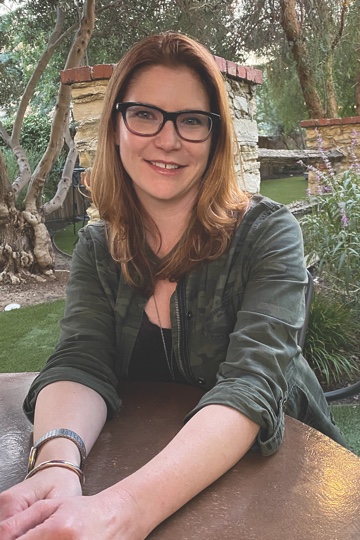 Kirill: Please tell us about yourself and the path that took you to where you are today.
Kirill: Please tell us about yourself and the path that took you to where you are today.
Eve: I’m a production designer for film and television. I was working at a boutique advertising agency in New York City in 2007 when I started looking for another career since I wasn’t inspired by my work anymore. I remember watching the Oscars that year, and there was an art direction category. I thought, I’m an art director what’s the difference?
I started doing research on what the job entailed, and the more I read, the more interested I became. I had also worked at a newspaper in New York, and with that professional experience together with my work at the advertising agency, it looked to have a lot of overlap with my skillset along with my studies of film and art history. My background as an artist and photographer didn’t hurt either.
I applied and was hired to art direct a short film called Officer Down shooting the very next weekend, and that’s how my journey in the world of art direction and production design began. When I walked into the prison on the first day of shooting, I just knew this it was it. It was exciting and social, creative, and challenging. I was 27 at the time, a bit older than others when they join the industry and already had two careers at that point. About six months later after designing various small jobs around NYC, I quit my job and moved to Los Angeles.
Kirill: Do you find that your background in other industries give you a bit of an edge who have started in this industry straight out of college?
Eve: I think so. I find that my previous experiences help me in ways I couldn’t have envisioned prior to being in this field. Dealing with clients has been quite helpful in dealing with producers. Dealing with ad campaign budgets has translated directly into managing budgetary complications for sets builds. My extensive background in graphic design translated directly into a skill set for creating presentations, concept art and environmental design pitches.
Most production designers come in after having learned architectural design in college. I love taking classes and expanding my knowledge and skill set and I made it a goal to learn the technical side of designing by taking courses to learn hand drafting, sketch up and photo render programs. As I started working on bigger shows around 2010, I gained practical experience with larger set construction and was able to apply the skills I gained into technical applications.
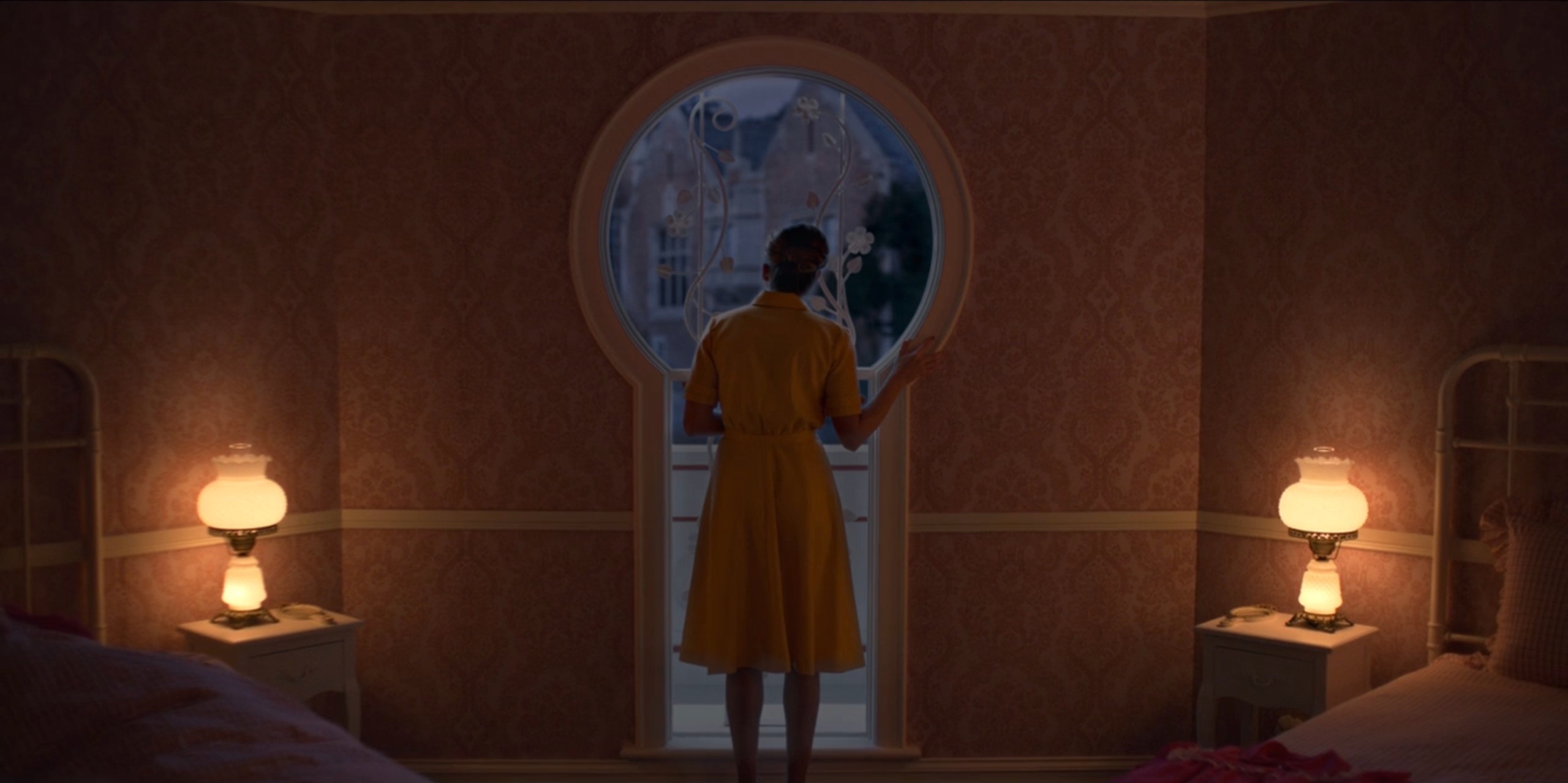
Dollhouse bedroom keyhole, production design of the “Dollhouse” episode of “American Horror Stories” by Eve McCarney.
Kirill: If your start was watching that Oscars ceremony, how much of your work life is glamor, and how much of it is grind and long hours on set?
Eve: Very little glamor [laughs]. It is a grind. It’s hard work, but I was an athlete my whole life, and I’m used to working hard. I used to wake up while it was still dark and practice in the pool in the winter in Pennsylvania, and I would train all summer too. I’m used to that dedication and hard work.
Quite honestly, I thrive off it. When I’m working and creating, I’m at my full potential. The hardest times for me are the breaks between the jobs. It’s definitely a grind, but I’m happy to do it. I find so much joy in designing.
Kirill: How many hats do you wear? You’re an artist, a craftsperson, an accountant, a timekeeper, a psychologist / psychiatrist, and maybe a babysitter for grown people in your department. Does it get overwhelming sometimes?
Eve: Sure, sometimes it can, especially on the smaller projects where you have less support. In that case you are wearing many hats and you’re doing things practically with all of those various hats. I’m designing the graphics, and creating / managing the budget, and helping to paint the set, whatever was necessary on those earlier shows. On the bigger shows, when you have a full team in place and a proper support structure, it makes a world of difference.
I was fortunate to have two amazing art directors on “American Horror Stories” as well as two fantastic set decorators. My construction coordinator is fantastic, along with his whole team. When you have that support in place, it takes a lot of pressure off. Regardless, it can be overwhelming at times. During those moments I’ll take a minute, breathe and try to get some perspective. In my experience, it’s always worked out. You need to stay positive.
Continue reading »
Continuing the ongoing series of interviews with creative artists working on various aspects of movie and TV productions, it is my pleasure to welcome Juli Sasaki. In this interview, she talks about the challenges of making indie films, working within budget restrictions, the variety of screens in our lives, and the ongoing impact of the pandemic on the industry. In between all these and more, Juli talks about her work on the recently released “Poser”.
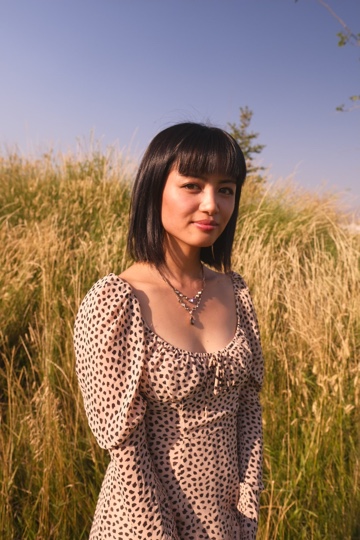 Kirill: Please tell us about yourself, and the path that took you to where you are today.
Kirill: Please tell us about yourself, and the path that took you to where you are today.
Juli: I think I’ve been very lucky to stumble upon the path I’m on now. I grew up in a small suburb of Columbus, Ohio that felt very much like a bubble. My world view was so limited – I had this obsession with the idea of traveling the world but somehow never thought it would be possible. Then, I decided to take a leap of faith and took a year off of college to pursue an experiential learning program based in Slovakia. That led me to live in Madrid for a while, and that’s where my interest in filmmaking began.
I had no idea what the process of filmmaking was like, but I was very interested in photography at the time, and filmmaking seemed like the pinnacle of photography and all art forms coming together into one. From there, my friends offered me a job back in Columbus working as a production assistant at their small independent production company, Loose Films. We worked on mostly commercials and documentaries together with the goal of saving up and making a feature film. As I learned more, I started producing projects until we finally had the opportunity to make our first feature, which was Poser. From there, I kept wanting to learn more about the art department on bigger sets, so I moved to NYC with the hopes of joining the art department on a tv show. I joined The Marvelous Mrs. Maisel as a background extra, then a Covid PA, then Props PA, then moved to another show as an Art PA, and finally landed at The Gilded Age as a Graphics PA.
This year, I joined the 829 Union, and thanks to my wonderful boss trusting me, now I’m working as a Graphic Artist on The Gilded Age. It’s been a wild path, but I am learning so much and having a lot of fun!
Kirill: What is the biggest thing about your industry that the “outsiders” are not aware of / underestimate?
Juli: I think the biggest thing that people underestimate is the amount of time and resources it takes to make a film. Filmmaking is a huge effort that requires so much coordination between different departments. Everyone from the departments needs to be present just in case something is needed last minute, between takes, etc., and that often means a lot of waiting. That’s why our days are so long, because filmmaking is a little like a relay race sometimes.
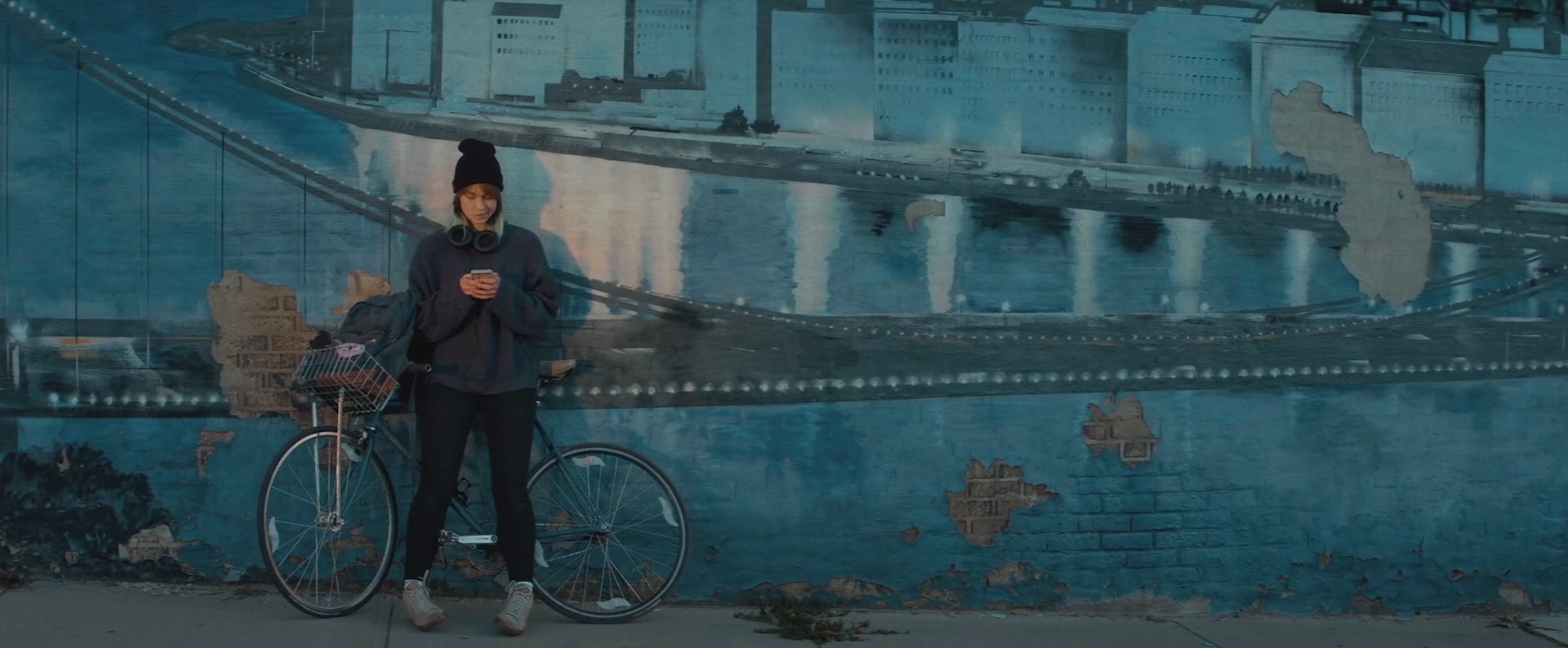
Kirill: How difficult is it these days to make an indie film, in terms of raising money, finding the right people to work on it, and connecting to the audiences?
Juli: I would say that making an indie film is never easy, but I am happy that there is a growing support for independent film, and there are a lot of resources and networking groups that I’ve found specifically for BIPOC and under-represented folks in film. This means that more diverse stories are getting out there and engaging new audiences. The best crew I’ve ever worked with was a team of almost all women that I’d met at Sundance. My friend and I drove up to NYC from Ohio to work on a short film with them, and it was a life changing experience. In Ohio, the film community is mostly men, and I was often the only woman on set. There are a lot of supportive film communities online and in person, and those have been a great resource for finding a good crew.
Kirill: What does being an artist mean for you?
Juli: Being an artist means expressing yourself through creating something with intention, no matter what medium.
Kirill: Do you think an artist is somebody who is “born” into it, or can creativity and inspiration be taught?
Juli: I think there are definitely people who are born artistically inclined, but I am a firm believer that experience and hard work practicing one’s skill can make a great artist.
Kirill: Getting closer to “Poser”, do you see Lennon as the “bad guy”, or a person that is trying to find that creativity in herself?
Juli: For me, Lennon is a relatable character for most of the film. She is trying to find herself, and she ends up taking too much inspiration from others instead of using that to fuel her own creativity. Lennon takes the Picasso quote, “good artists borrow, great artists steal” to an extreme, and that’s where she becomes the villain. She becomes obsessed with taking over the persona of Bobbi, and that turns dark very quickly.
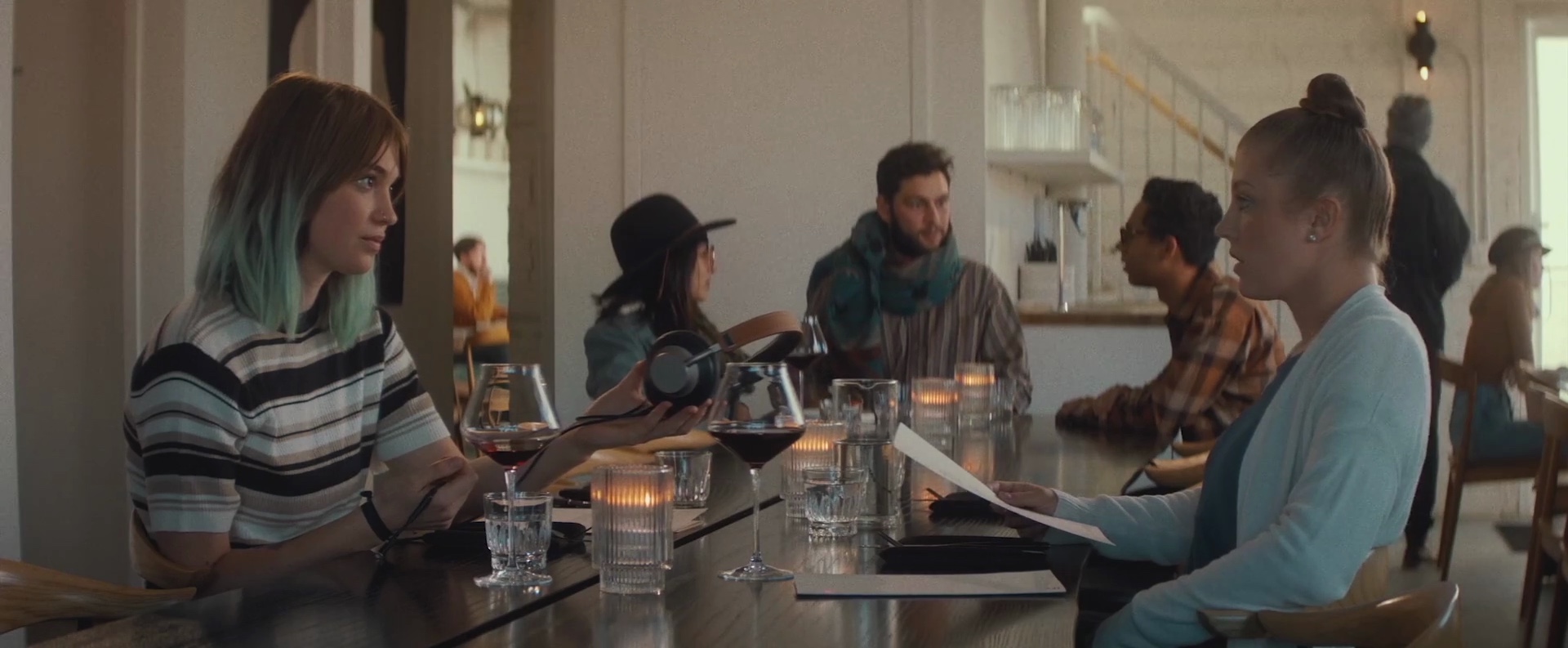
Continue reading »
Continuing the ongoing series of interviews with creative artists working on various aspects of movie and TV productions, it is my pleasure to welcome Logan Floyd. In this interview, he talks about his lifelong interest in capturing images, the transition of the industry from film to digital, keeping up with the technological advancements, and working on indie productions. In between all these and more, Logan talks about his work on the wonderfully crafted “Poser”, a story of a young woman obsessed with becoming an artist despite not quite knowing how to get there.
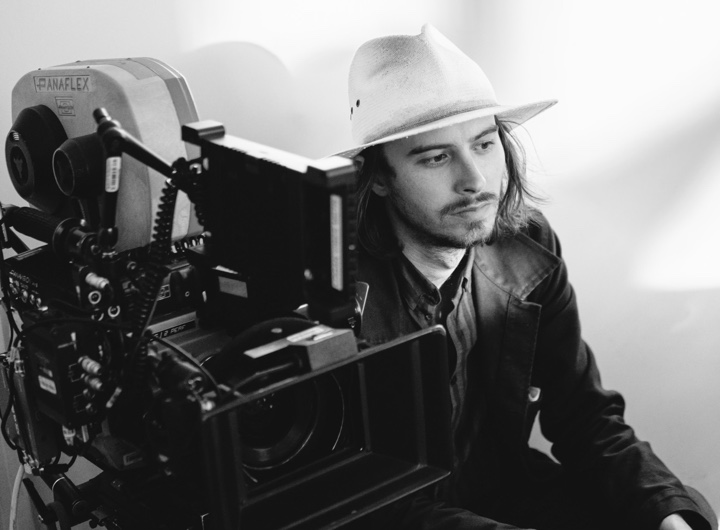
Kirill: Please tell us about yourself and the path that took you to where you are today.
Logan: I come from an artistic family. My mother is an impressionist painter and my father is architect, and both have a strong passion for the arts in general, be it photography, theater or fine art.
When I was really young and we would go on trips – whether it was a family trip getting in the car and driving 30 minutes, or getting on an airplane and going to another country – my mother would give me a disposable camera. Early on I didn’t understand how paramount that interaction was between her and me when she would hand me that camera. I just immediately took it, started to look through the little viewfinder, and started to see the world. I would look at what I was walking through, wherever that situation brought me to.
When you’re young and you’re traveling, you don’t really understand that this is going to be a trip that you might remember for years to come and appreciate. So I would just start snapping photos, and I quickly found out that the faster you start to take those photos, the faster you run out of chances to continue to take photos – because you only have so many exposures that you can use with one disposable camera. So I found that out very quickly, and then started to be more meticulous with how I was photographing my surroundings. Mind you, this was elementary ways of looking at the world at that time, but there was an honesty to it that I found exciting.
I was just walking around with my family, and I was being able to find things that were interesting and not having to discuss them around other people and just enjoy them for myself. I feel like I was creating a connection with wherever I was in that time. All this of course, I feel looking back on this later in life with a little bit more understanding, and breaking this down in a philosophical way. That was the big thing that got me interested in photography. I captured these trips that my family would take me on, and I would start capturing things around the house.
My mom has a strong connection to color, and my father also has a strong sense of design. Hearing their conversations as I would sit by them, or maybe sitting at the dinner table talking about our day and they would be describing what they were looking at – I was so fascinated by that. I didn’t really have the understanding that they did with the world, and with everything that they have accumulated up to that point professionally, as well as in a sense of being and being human and feeling like they wanted to explore and discover new things.
Eventually what started to happen was I would hear what they were discussing in the moment, and then look at what they were looking at, and try to understand how they could be speaking. I didn’t really ask many questions as a kid. I have an older sister, and the dynamic of having an older sibling is that you may be overshadowed by them, especially in a social setting – so I found myself being an observer. I would sit quietly and just look at what was around me. It became a mixture of having being introduced to these tools and the idea of a still image frame, and then also being really comfortable just being a fly on the wall. That’s when I started to put together a feeling for which I thought things around me had meaning. Those were the early-early years.
Before I went to college, I thought I was going be an anthropologist. I was interested in cultures and seeing how different people lived all over the world. I also had a strong connection to industrial design. I loved inventing these Rube Goldberg mechanical things, taking things apart and then putting it back together, seeing how it was working. I’m also a big sailor and I would use my fascination with mechanical objects with how I connected to the world. Not only I was interested with the beauty side of the world, but also with how you get there. That’s where sailing is connected. I grew up on the water, and I enjoy getting out on the water and becoming connected with the wind and with the elements of weather.
All of that together created this perfect storm of filmmaking. Right before I went to my undergraduate program, my mom asked me to be the cinematographer for a documentary that she was shooting. She trusted me to be gentle with the subject matter and to be sensitive to the people that we were going to be working with, and the spaces that we were going to go into. She brought me along and that was my first real professional setting where I started to think about it from the story perspective. Before that I was shooting films with my friends and I was doing little art pieces with myself. I would walk around various parts of the neighborhood that I grew up, and I was interested in light, composition, and movement. But I never really put it all together in a story.
So having this chance to shoot this documentary, I realized that this was everything that I enjoyed. I loved the spur of the moment, the reactive nature that you had to embody, and also being fluent in the technical aspects to make whatever moment you’re capturing possible without getting in the way of that moment. Documentary filmmaking is so intuitive and gentle, and it’s an amazing feeling to be thrown into a space, and have to keep your composure and your knowledge, but then also react. I found that really enjoyable.
Once I went through undergrad, I started seeing this field as a family. You have all these different family members that you work with, and everybody has their own skill, and then you come together and create this piece. I didn’t know that before going into undergrad. While I was there, I found out that I could just fall into the camera side of the process as well as work with lighting. That’s what being the cinematographer is. It encompasses these two areas. You can paint with light, and you can use specific camera techniques to capture that light and to capture that space that you’re in.
Watching that whole process evolve from that first moment I was handed that disposable camera hasn’t been super clear, and I didn’t really realize that this was something that someone could devote their whole life to. And it’s been an amazing experience to then realize that you’re an explorer, you’re an inventor, you’re an anthropologist, you’re an artist – all in one. And you’re also protecting the art of storytelling. We have so many stories to tell, and this is such an exciting time. There’s more chances for us to go into these places that weren’t ever accessible before.
With the tools we now have, we can go there and capture these stories and share those with the world. It’s going to be this everlasting, never-ending progression. It’s exciting to know that I’ve gotten to this point, but also to know that this whole learning process is never going to end, and to continue to grow.
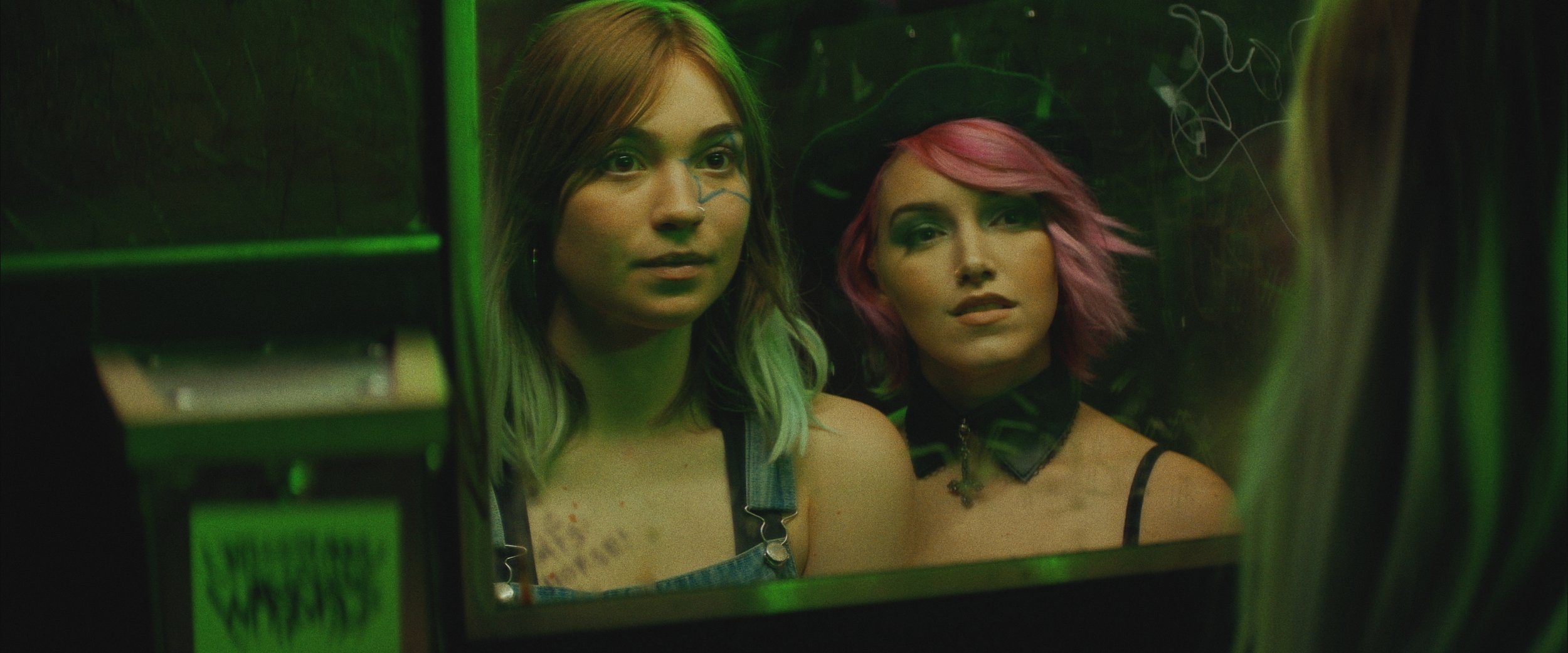
Continue reading »
Irreverent, at times depraved, and always provocative, “The Boys” is a masterful exercise in social, political and pop culture satire that does not shy away from shining a light at the darkest corners of the present-day discourses are galvanizing our society. Continuing the ongoing series of interviews with creative artists working on various aspects of movie and TV productions, it is my delight to welcome Jeff Mossa. In this interview, he talks about balancing the art and the craft in the field of visual storytelling, breaking away from the constraints of traditional television in the ever-evolving world of episodic and streaming productions, and the impact the global pandemic has had on the industry. In between all these and more, Jeff talks about his work on the third season of “The Boys”.
 Kirill: Please tell us about yourself and the path that took you to where you are today.
Kirill: Please tell us about yourself and the path that took you to where you are today.
Jeff: When I was in elementary school and middle School watching “Star Wars” and eventually “Raiders of the Lost Ark”, I was fascinated by all of the visuals and the special effects. Back then we only had three channels of television, and they would occasionally have these primetime specials where they would show you behind-the-scenes or the making-of whatever it was, and I had watched a primetime special that was concentrating mostly on Industrial Light & Magic. They were covering some of their work for “Star Wars” movies as Indiana Jones and probably “Close Encounters of the Third Kind”, and I was glued to it.
I always had a talent for drawing and art, so I was drawing “Star Wars” characters and all that sort of stuff. I was fascinated by Indiana Jones, and wanted to be Indiana Jones – but of course I’m not a swashbuckling archaeologist. I remember watching this one particular episode and I said to my mom at the end of it that I would love to do that. IL&M at the time was all about miniatures, things like AT-ATs for “The Empire Strikes Back”. I grew up in central Massachusetts in the middle of a very small town. We didn’t even go to Boston very often, even though that was a relatively close city, so my childhood was pretty sheltered. When I said to my mom that I would love to do that sort of thing, it didn’t occur to me that it would even be an option to consider pursuing that industry.
When my mom heard that, she said “Why don’t you?” I probably said something along the lines that I wouldn’t even know where to start, and she said “Well, somebody’s going to do it” and I’ll never forget that. I was in 7th grade at the time, and that’s where my path has started. My brother is four years older than me, and he was a high schooler at the time. He was a dancer at a variety show that they put on at the all-boys Catholic school. They didn’t have a drama club or anything like that, but they would put on a Spring Spectacular every year. I’d go watch my brother and he’d dance, and then the lights would go down and all these guys come out, and they were in black t-shirts and black pants and they’re moving stuff around in the dark.
That’s what I was fascinated with – watching them move the stuff around in the dark. Eventually I went to that same high school he went to and then I became part of that stage crew. I worked on that stage crew for four years, eventually designing all the sets for those shows, knowing that what I wanted to ultimately do was work in a film. I had a guidance counselor there when it was time for us to start applying to colleges, but I didn’t know him that well. He knew that I had designed the sets, and one day in the hallway he asked me which school I was applying to.
He asked me about Boston University and I said that it wasn’t on my list. And then he told me that they had a great theater program and that I should apply, so I did. I got accepted into their conservatory-style theater design program. Now theater wasn’t where I wanted to go, but there’s not really a lot of great undergraduate design programs for film or television, so I ended up going to Boston University.
It was a very competitive program. We started as a group of about 22 designers, and by the end of four years there was four of us who graduated. It was an intensive program, and it was very good for me. I came out of there with a lot of skills. It was the first time that I had had any sort of formal artistic training or teaching. I was doing theater shows and I enjoyed doing the theater, but I still was focused on doing film and television.
So when I graduated, I packed my car and I drove across the country to Los Angeles. I knew nobody there and I had nowhere to stay, so I stayed in a youth hostel for a couple weeks. I never wavered on what I wanted to do, and I ended up getting a job at the UCLA Theater Department as a painter, which eventually introduced me to some graduate students who were working there. They were my age, they were in the film program there and they were assisting designers, and I ended up working with them assisting designers – and the rest is history.
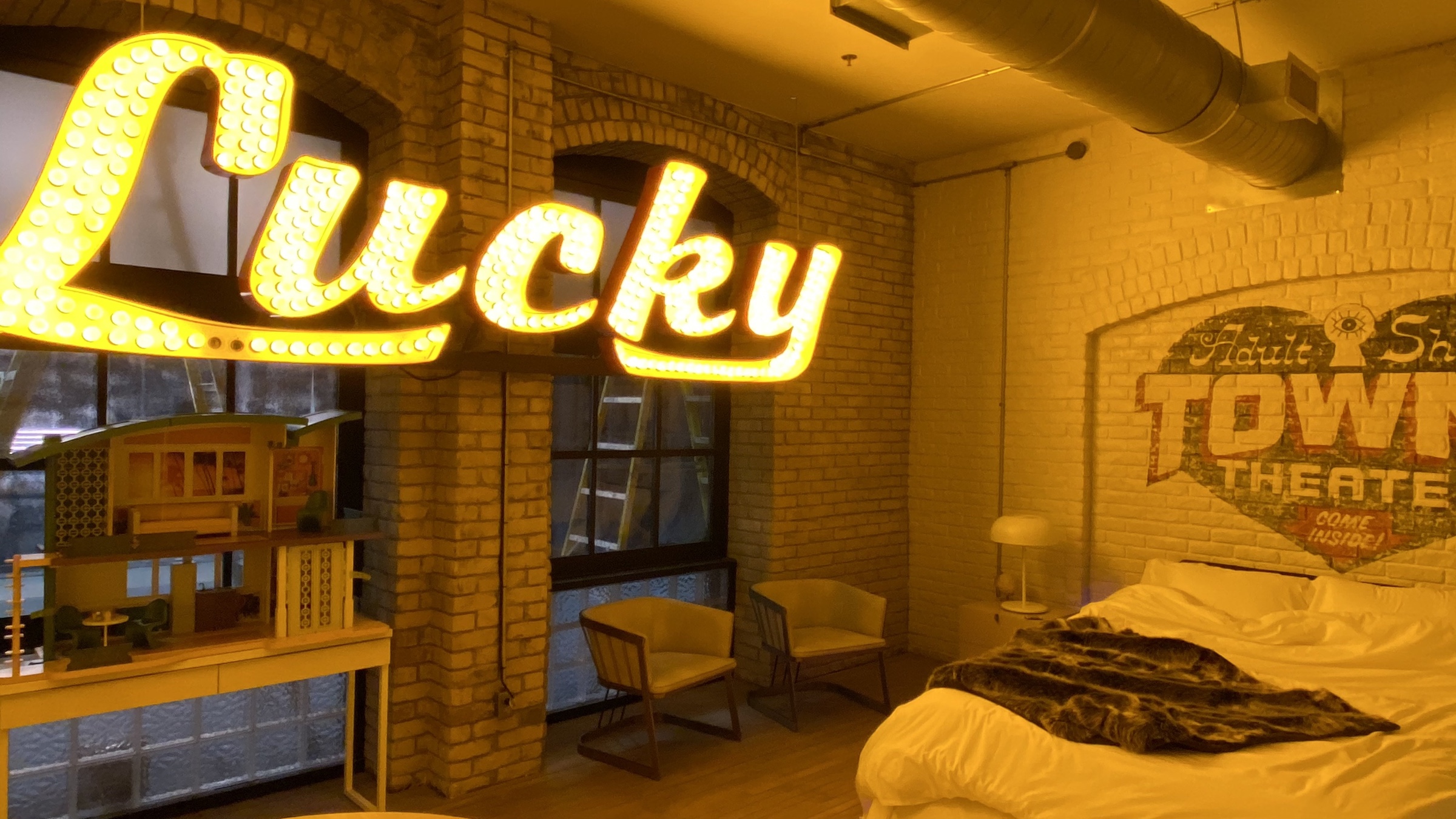
On the sets of the third season of “The Boys”, courtesy of Jeff Mossa.
Kirill: How has the transition of the industry from film to digital been for you?
Jeff: I graduated in the early ’90s, and the first show that I did that was digital was about 16 years ago. At the time we were still doing a lot of film, so I did that and then we went back to film. I would say really it’s only in the past 10 years that it’s been almost all digital.
I don’t know that digital has really affected what we do in the design world that much. I started working in features largely for the first 10 years, and there was one thing that was impressed upon me very early. If you’re in a movie theater and you’re standing in front of a 40-foot or a 70-foot wide screen, at some point you know they’re going to do an insert. You know somebody’s going to be dialing a phone and we’re going to do a shot of that, and then it’s going to be on the screen. That phone is going to be eight feet tall on the screen – which is very much the opposite of what I would do in theater. When I was in theater in college, your audience is 30-50 feet away. You are making things more contrasty, more loose, less precise on purpose because they can’t see the details, and so you have to do broader strokes.
When I started doing films, it became very micro at times. This was before digital was a thing, but I think because I had that training initially, that part of it hasn’t really changed for me.
What has changed dramatically is the ability to shoot in low light, the ability to light sets with practical fixtures more so than movie lights. I’d say this is particularly true in the last 7-8 years that I have a little bit more hand and a little bit more influence in how the sets are lit. I do a lot of built-in lighting into sets, and so I end up working a little more closely with the director of photography and the gaffer then I might have prior to the digital age. Back then they had to use a lot more high-powered lights to expose the film. We would put a practical lamp on stage and then they would support it with a light off stage. They still do that sometimes, but now they can actually use the practical lamp that we put in there as their main source of light. That’s probably the biggest change for me.
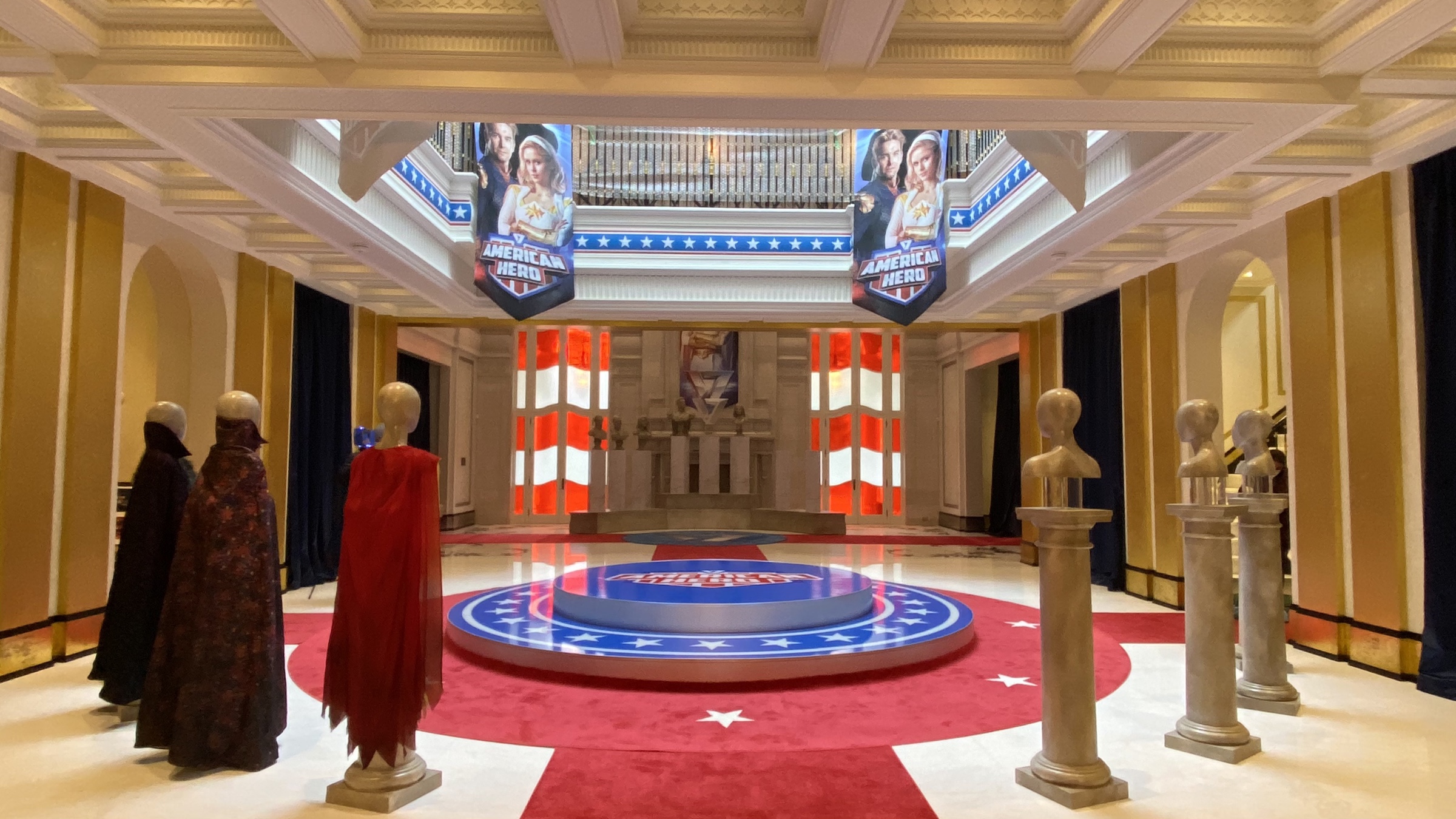
On the sets of the third season of “The Boys”, courtesy of Jeff Mossa.
Continue reading »
![]() Kirill: Please tell us about yourself and the path that took you to where you are today.
Kirill: Please tell us about yourself and the path that took you to where you are today.![]()